To a beginner, it can be confusing when you first hear about the terms ‘Class A RV’ or ‘Class C RV.’ But don’t worry because after reading this guide, we will clear all your doubts regarding the RV classes. So, without further ado, let’s dive in!
Key Takeaways:
In short, here are all the classes of RVs popular in the RV industry:
- Class A
- Class B
- Class C
- Camper Van
- Bus Conversion
- Travel Trailer
- Fifth Wheel
- Toy Hauler
- Truck Camper
- Pop-up Trailers
- Tear Drop Camper
- Hybrid Trailer
Keep reading to learn the specifics of each RV class so that the next time you’re in a conversation about RVs, you’ll be able to speak confidently and use the appropriate lingo!
Speaking of lingo, here are some more great resources after you’re done with this guide. Check out our RV Terms, Jargon, & Definitions [Bookmark Worthy].
RV Classes For Beginners: Cheatsheet
| RV Class | Type | Average Price Range | Size | Sleeping Capacity |
| Class A | Motorized | $250k – $500k | 26 – 45 ft | 6-10 people |
| Class B | Motorized | $60k – $150k | 17 – 19 ft | 2 – 4 people |
| Class C | Motorized | $80k – $200k | 21 – 41 ft | 4 – 8 people |
| Camper Van | Motorized | $40k – $150k | 18 – 24 ft | 4 – 5 people |
| Bus Conversion | Motorized | $30k – $45k | 20 – 40 ft | 8-10 people |
| Travel Trailer | Non-Motorized | $11k – $35k | 12 – 35 ft | 2 – 10 people |
| Fifth Wheel | Non-Motorized | $36k – $135k | 25 – 45 ft | 4 – 8 people |
| Pop-up Trailer | Non-Motorized | $11k – $26k | 8 – 30 ft | 5 – 6 people |
| Toy Hauler | Non-Motorized | $20k – 150k | 10 – 20 ft | 6 – 8 people |
| Teardrop Camper | Non-Motorized | $15k – $35k | 8 – 10 ft | 1 – 2 people |
| Hybrid Trailer | Non-Motorized | $18k – $40k | 13 – 25 ft | 6 – 8 people |
| Truck Camper | Non-Motorized | $5k – $60k | 10 – 15 ft | 4 – 6 people |
Recommended Read:
If you have ever considered paying cash for an RV thinking you might save some money, sorry to say that is not always the case. I highly recommend reading the following article first.
#1. Class A

Class A motorhomes have a sturdy and durable structure. Lippert typically supplies the RV industry with frames since they are the largest supplier in the industry.
Class A Their wheels, which are 22.5 inches in diameter, carry the motorhome’s considerable weight.
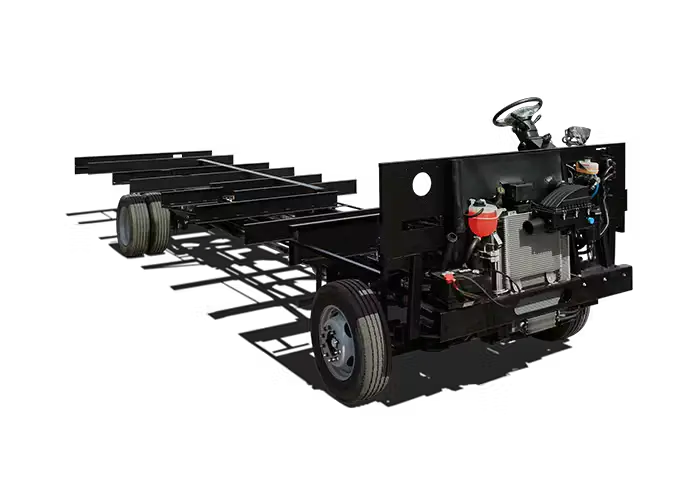
Class A motorhomes are among the biggest recreational vehicles available; they’re roomy, comfortable, and can accommodate a sizable family on cross-country journeys.
RVs in the Class A category are driven by either a gasoline or diesel engine. Since the diesel engine is often located at the back of the camper, the RV is sometimes referred to as a “pusher.”
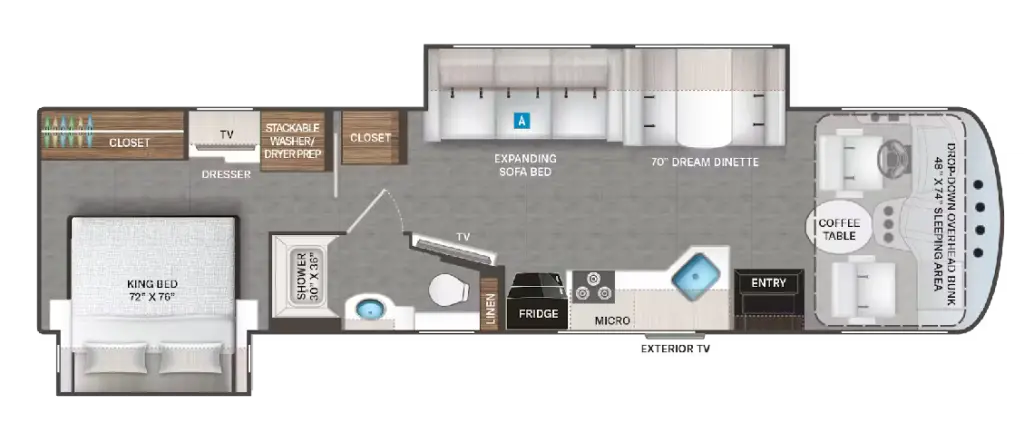
While driving in your Class A motorhome, you’ll feel like a celebrity.
In addition to the standard amenities in a typical house, this kind of RV also has a king-sized bed, a full-sized refrigerator, an outside entertainment center, and a washing machine and dryer.
With Class A, it’s clear that RVs can serve as a functional alternative to traditional housing.
Related Post: Do Class A RVs Have Outdoor Kitchens?
#2. Class B

Class B RVs typically vary in size from 18 to 24 feet. Because of their compact size, these RVs are an excellent alternative for parking in restricted areas.
In addition, class B motorhomes are often constructed on a van chassis, thus the common name “camper van.”
RVs in the Class B range are compact, sleek, and ready to hit the road. In addition, class B motorhomes are ideal for smaller groups since they are maneuverable and more fuel-efficient than Class C RVs.
While most Class B motorhomes lack rollouts, they provide high-end comforts, including galley kitchens, bedrooms, and bathrooms.

Class B camper vans are so simple to operate and park in that many people use them as their primary vehicle.
You won’t need two vehicles if your camper van can serve as your daily mode of transportation to and from the office and other regular chores.
#3. Class C

Class C motorhomes provide a happy medium between Class A and Class B models. Each one has a cabin chassis.
You may recognize them by the sleeping quarters above the cab. As a result of where the bedroom is placed, the living space may accommodate more people. One Class C RV can accommodate four to eight people.
If you’re planning on doing some city sightseeing while you’re away from your Class C motorhome, you may leave it parked and get in your tow vehicle.
Class C motorhome gas economy is intermediate between Class A and Class B. The Class C motorhome is worth looking at if you have a large family and want to tow a vehicle.
One of the best things about a Class C Motorhome is its adaptability. Taking a Class A motorhome on the road may not always seem like the best idea, but a Class C motorhome is always a good choice.
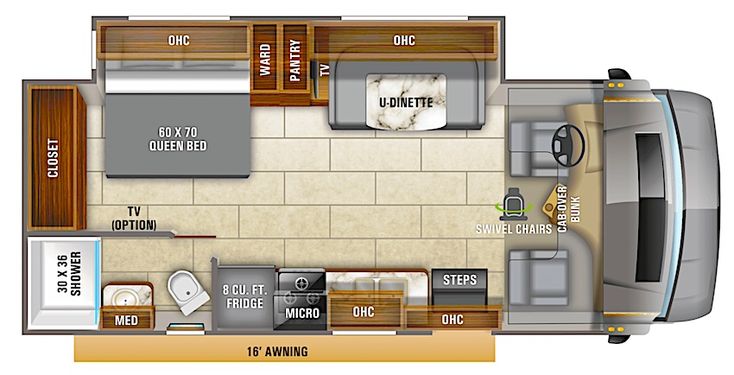
Use it as a vehicle for your massive family picnic. Class C is the way to go if you need some more space.
When you’re on the road for a vacation, you may use it as a vehicle and a place to sleep. In general, a Class C motorhome offers a means to see the world more often without giving up the conveniences of home.
#4. Camper Van
The names “campervan” and “motorhome” are sometimes used interchangeably, although these recreational vehicles are very distinct from one another.
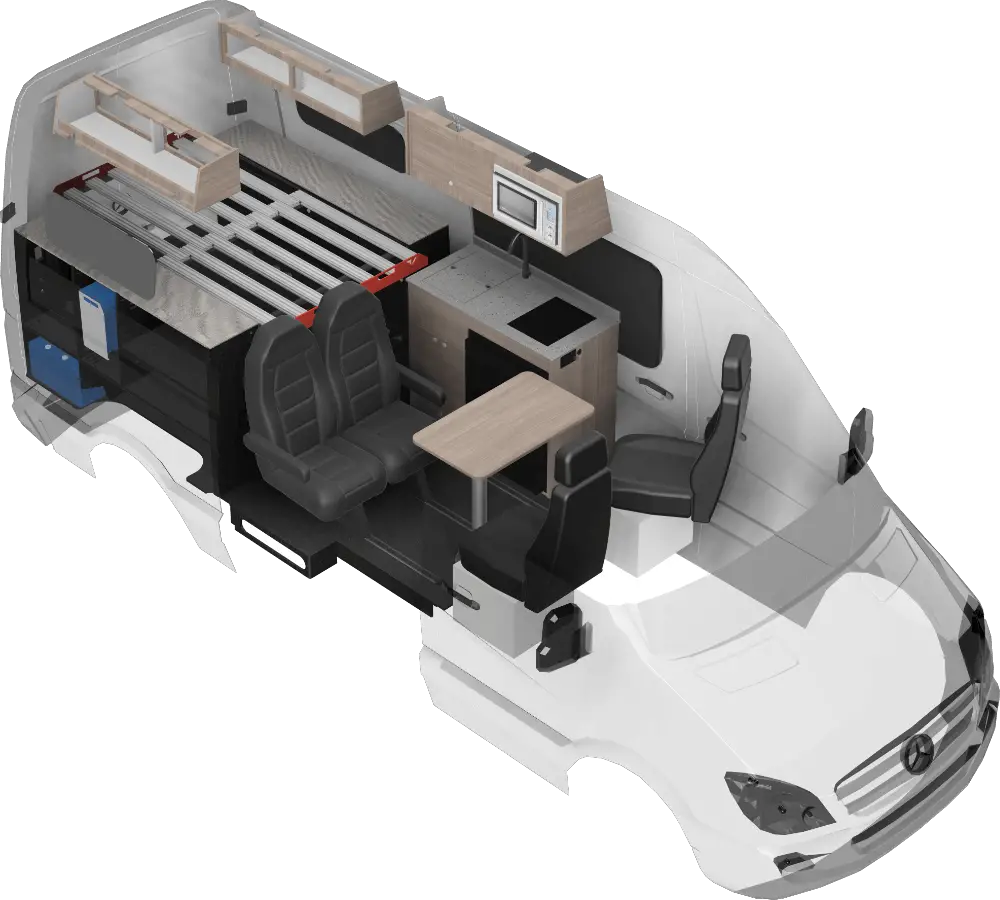
Campervans, which resemble small vans, are versatile and practical vehicles. It’s the independence of taking just what you need and leaving behind any “baggage” that could keep you from fully experiencing a foreign place.
A campervan is often just minimally furnished, with a bed and a tiny cooking space.
Campervans are for the free-spirited adventurers, hippies, and young people who want to see the world without any ties holding them back.
In contrast to camper vans, motorhomes (like Class B) are built with the traveler’s comfort in mind.
Larger motorhomes focus on providing a homelike environment for their occupants. Motorhomes often have a dinette for dining and relaxing, a kitchen with sufficient counter and cabinet space, and both fixed and retractable beds.
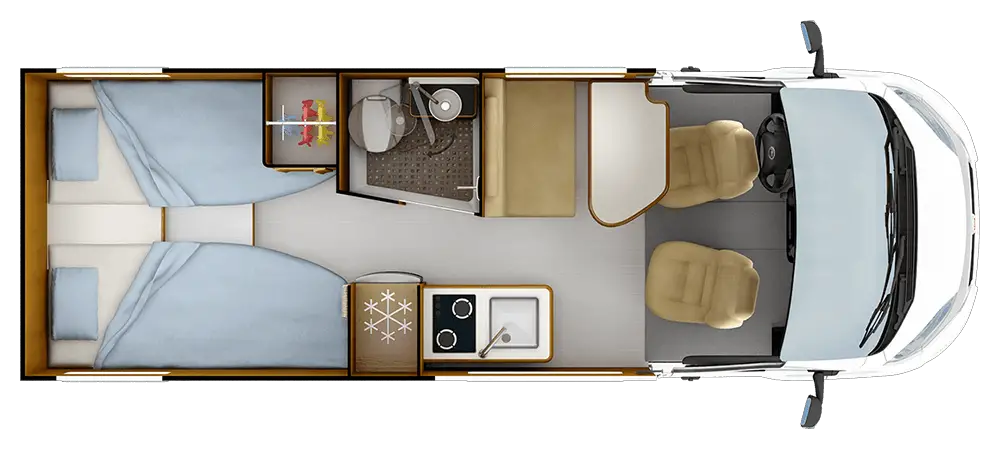
The key distinction between camper vans and other kinds of recreational vehicles is the size of the incorporated facilities.
#5. Bus Conversion [Skoolie]
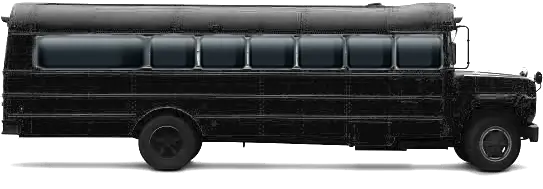
A bus that has been modified into an RV is called a Bus conversion RV. But, again, you may get this done professionally or on your own. They’re very similar to Class A’s.
A bus-conversion RV is simply a motorhome or, in some circumstances, a stationary compact house that may be converted from any kind of bus.
Once employed for transporting students to and from school, some buses are now being converted into homes or recreational vehicles.
These transformations are often known as Skoolies. First, bus seats are usually eliminated, or at least most of them. Next, the spacious school bus’s interior goes through a series of modifications that make it habitable.
For longer journeys, there are buses outfitted to function as makeshift homes. Buses used by musicians on tour are a brilliant example of this.
The tour buses transport the passengers from one stop to the next and provide them with sleeping quarters, flushing toilets, showers, and plenty of space for their belongings.

Contrary to popular belief, however, artists seldom make such buses their permanent residence while on the road. Instead, they stay in motels at each stop and sometimes aboard the buses themselves.
Buses converted into RVs are meant to be utilized like recreational vehicles: as mobile dwellings.
#6. Travel Trailer

Most people who choose a non-motorized recreational vehicle go with a travel trailer. You’ve probably seen one being towed by a vehicle or pickup truck along the road.
From small jellybean-shaped versions with a chuck-wagon kitchen in the back to enormous house-on-wheels models, there is a travel trailer for every need and budget.
You may get a travel trailer in about any shape or size you can imagine. With so many options, folks of varied backgrounds and preferences can discover a trailer that works for them.
Travel trailers are little residences pulled behind a car. Therefore, while buying a travel trailer, it is essential to ensure your own vehicle can pull the weight of the travel trailer you’re considering.
Travel trailers’ principal appeal lies in their affordability relative to motorized RVs. Budget motorhomes cost three to four times as much as a comparable travel trailer.
Driving with a large trailer connected to your car may take some time, but a travel trailer will ultimately provide you with more freedom and comfort.
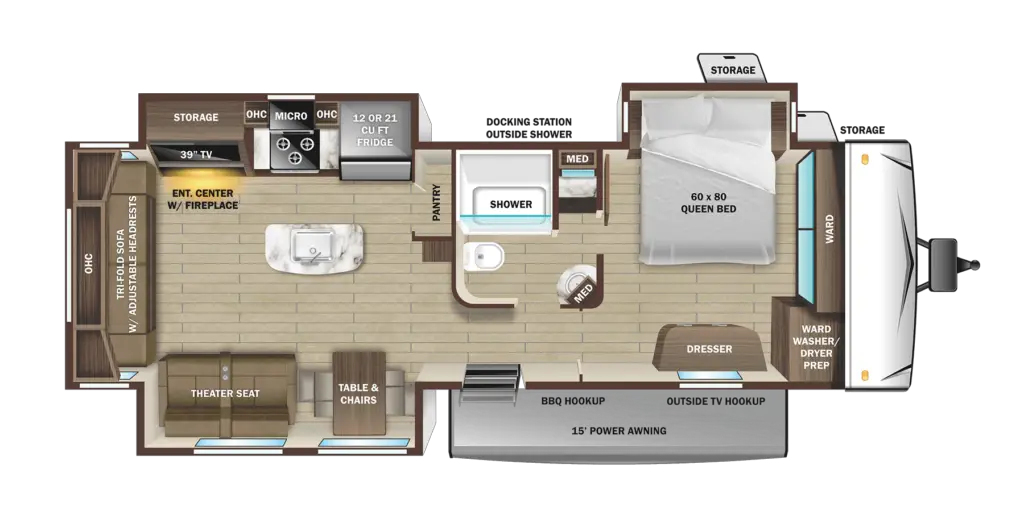
For one, you won’t have to worry about finding a place to park a huge RV in the city center since you can just unhitch your travel trailer at the campground and drive your own car downtown.
#7. Fifth Wheel

Fifth-wheel campers are towed by pickup trucks using a hitch installed in the bed’s center. The cab of the fifth wheel extends over the truck bed at this connection, providing you with more space for gear or a bed if needed.
Fifth wheels are advantageous because they are huge recreational vehicles that are not a single unit but instead have a secure joint between the towing truck and the fifth wheel itself.
In addition, fifth-wheel trailers are convenient since they can be towed with relative ease, provide ample storage space, and allow the tow vehicle to double as a means of local transit.
The fifth-wheel trailers have many applications, but they are not without flaws.
The fact that you can’t drive them without a truck, that they have to be stored in two different locations, and that they demand a lot of space when they’re not in use are all drawbacks.
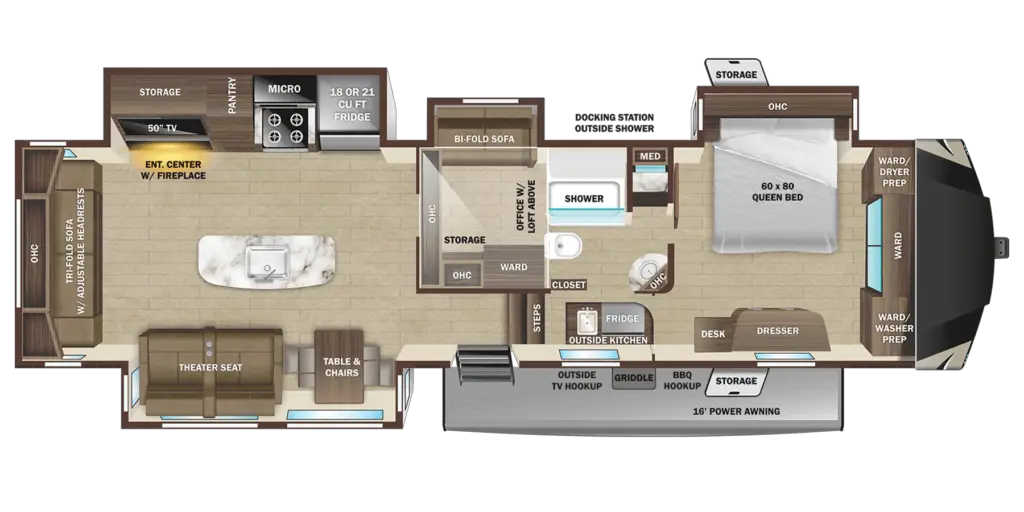
The name “fifth wheel” comes from the vehicle’s configuration. They were first developed for use on horse-drawn carriages in the middle of the 1850s.
A horizontal wheel mounted on the truck cargo’s frame freed up the front axle to turn on its own, a feature made possible by the manufacturers. This greatly improved both the stability and the maneuverability.
#8. Toy Hauler

A toy hauler is a recreational vehicle or camping trailer specifically designed to transport toys.
This does not apply to smaller toys but to larger ones like golf carts, snowmobiles, and dirt bikes.
Transporting large vehicles is made easier with the hauler’s lowering rear wall. However, compared to large family RVs, toy haulers are smaller and have fewer amenities.
Small off-road trailers, big equipment carriers with living quarters, and enormous caravans with specialized storage for your gear are all available.
Reducing the amount of time spent loading stuff is one of the main benefits of a toy hauler RV, which combines the functions of an equipment hauler and a mobile living area into one convenient unit.
Having a bed and a place to rest means you can spend more time in the great outdoors. These transporters have a primary cabin with a kitchenette for cooking and eating. Again, a place to sleep is available.

When the sofas in certain versions are collapsed, the garage space becomes a comfortable seating area.
In addition, extra storage is often located adjacent to a door in the living area of large toy haulers, which may be accessed from the room itself.
#9. Teardrop Camper

A teardrop trailer is a form of lightweight, transportable recreational vehicle. Because of their distinguishing form, which is spherical at one end and usually tapered at the other, they are simple to identify.
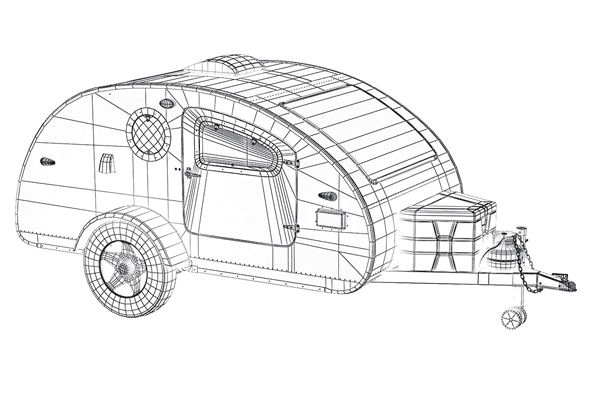
These RVs are simple to pull because of their compact size and low weight. But, unfortunately, most trailers are just bedrooms on wheels.
Some larger floor designs even include a kitchen, bathroom, and dining area.
Over the last several decades, teardrop trailers have seen a meteoric rise in popularity.
These recreational vehicles are perfect for explorers who want to experience the great outdoors but only need to bring the bare necessities.
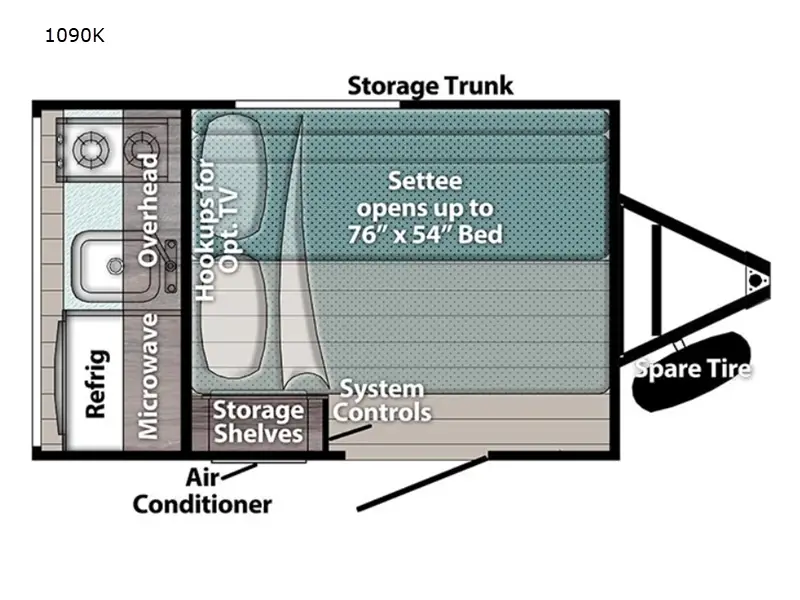
They’re also fantastic for camping trips to national and state parks. While bigger RVs may have trouble fitting into the tight spaces of local campsites, a teardrop trailer is a perfect solution.
#10. Pop-Up Trailer

Depending on the region, a pop-up camper may be called a mini POP, fold-out camper, or tent trailer. They are more reasonably priced than the alternatives.
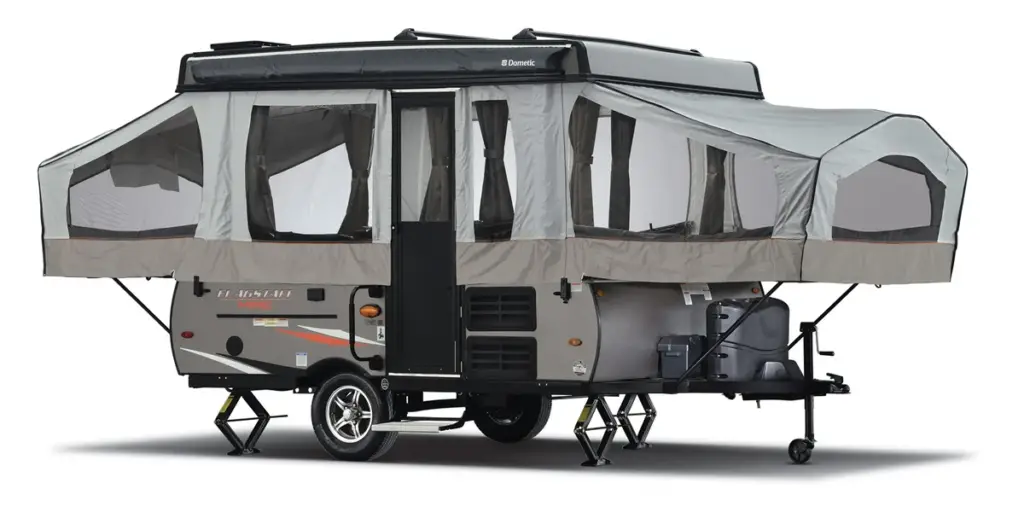
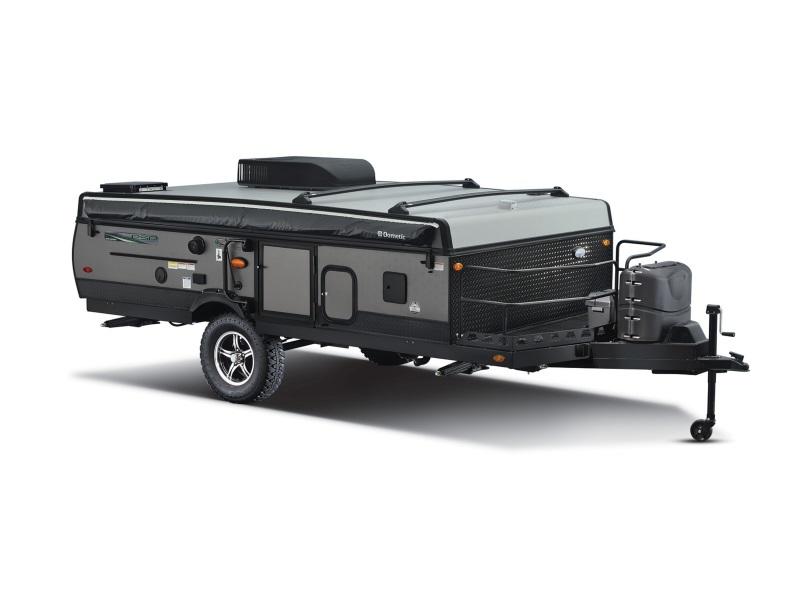
Pop-up campers vary in length from about 8 feet to 30 feet and in weight from 700 pounds to over 3 thousand pounds.
Unfortunately, the convenience of a pop-up tent is not always worth the sacrifice of comfort and convenience.
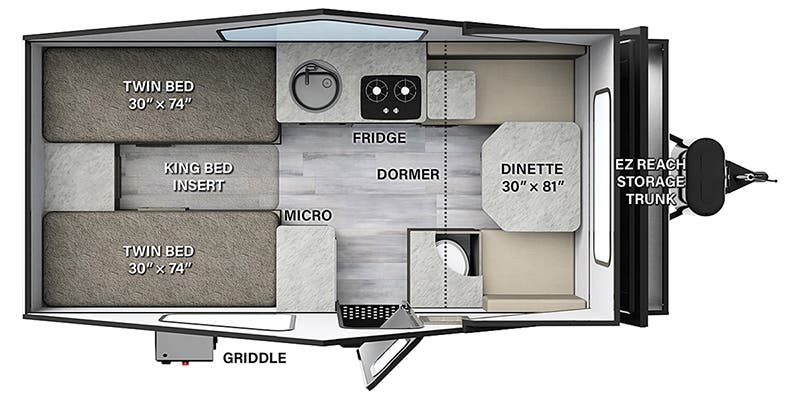
The greatest times to use it are for spontaneous trips or when you just want to go away for the weekend. Moreover, you won’t be able to carry a lot of stuff with you and remain away for lengthy periods since storage capacity is limited in this sort of RV.
#11. Hybrid Trailer

A hybrid camper combines elements of both traditional camping trailers and pop-up campers.
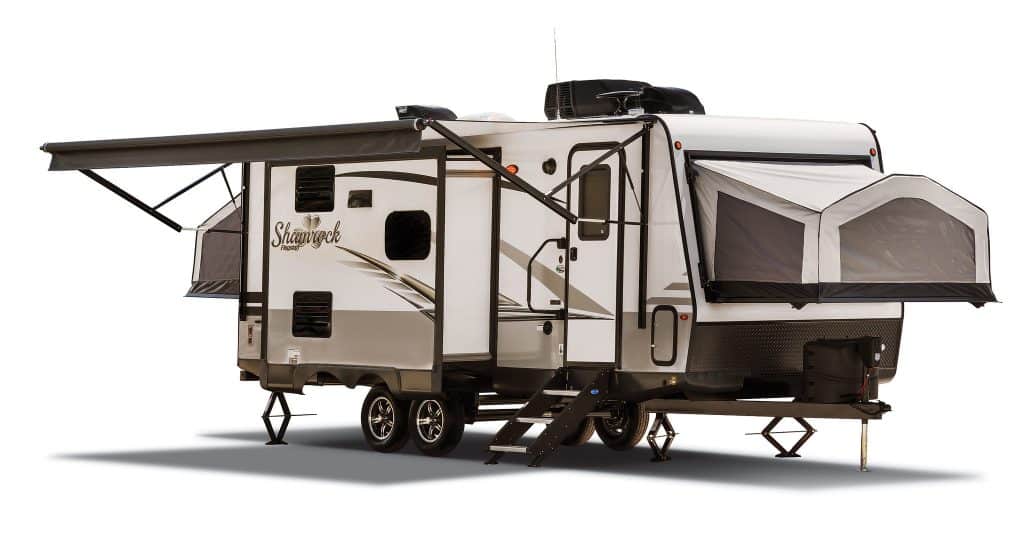
When being towed, a hybrid travel trailer seems to be a moderately sized unit; however, once at the campground, the front and rear beds stretch outward (mimicking the design of the pop-up) to provide more sleeping and living space.
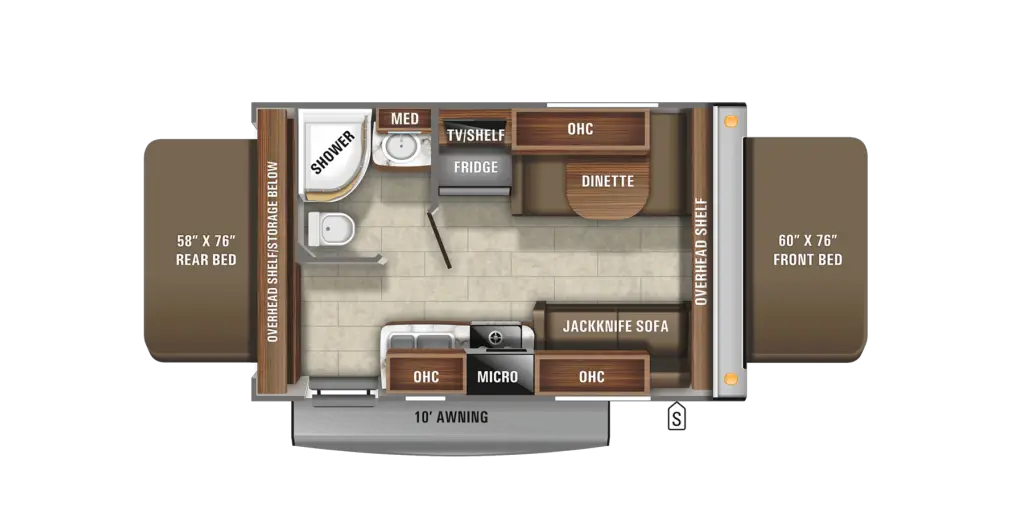
The popularity of pop-up campers has declined over the last 20 years, while hybrid trailers have risen in that time.
As a result, lightweight campers with plenty of room for a large group are in high demand, and hybrids have cornered this market.
#12. Truck Camper
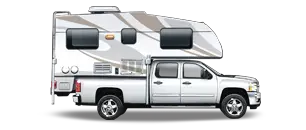
RVs that fit into a pickup truck’s back are called “truck campers. This supplementary area may function as a mini-house, complete with a bedroom, bathroom, and kitchen.

Most recreational vehicles are much larger than truck campers, which is the smallest option. Because of their small size, several jurisdictions classify them as cargo rather than recreational vehicles.
The bed of the truck makes it simple to load and unload the camper, making it simple to drive and leaving the vehicle’s bumper free for towing boats or other trailers.
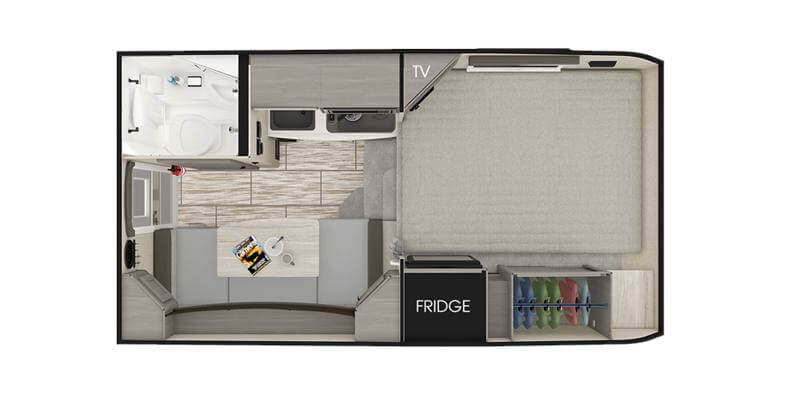
If you want to minimize driving hassles, a truck camper is your best bet, but you may be restricted in your choices.
However, the smaller size and lower price of truck campers make them an attractive alternative for those who need an RV occasionally or for short trips.
FAQs:
Class A, B, and Class C RVs, all of which are categorized as motorized RVs, are the most common types of RVs.
On a broader scale, however, RVs are also categorized into towable rigs, such as travel trailers and fifth wheels.
The foundation for a Class A RV is a bus chassis, and they often have the greatest room and are the biggest.
The foundation of Class B is a van, sometimes called a conversion van. However, Class C motorhomes are the smallest types built on a commercial truck’s chassis.
A Class C RV is usually the best option when taking the family on the road. You can all have personal space and privacy, which is particularly useful if you have teenagers or preteens in the house.
Class B RVs, which have the dimensions of a regular automobile but are much easier to move, is the best option if you need enough interior room without sacrificing mobility.
However, Class A RVs, on the other hand, are ideal if you’re searching for an RV with huge interior space and all the necessary household amenities.
Further recommended resources for you:


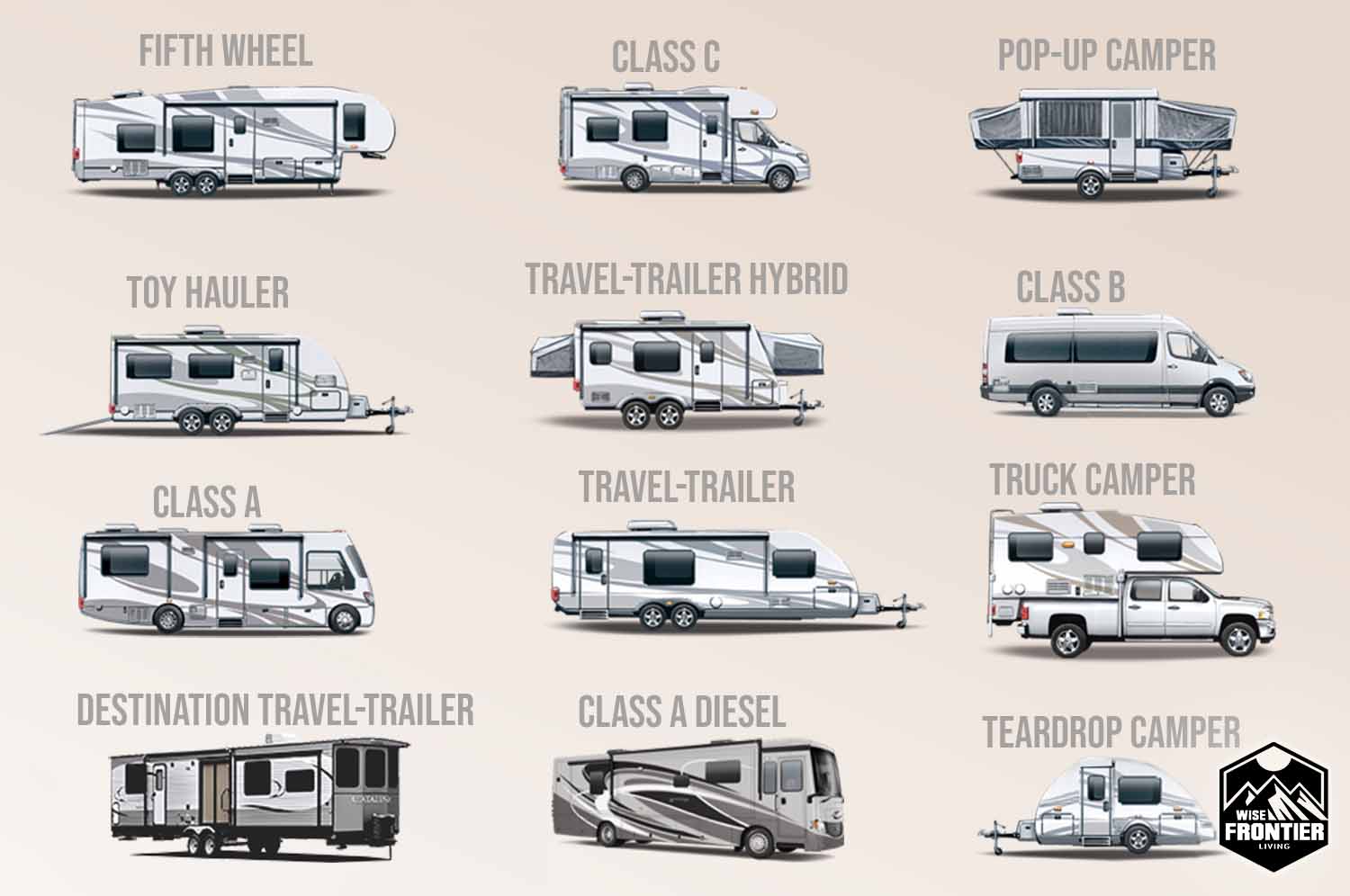
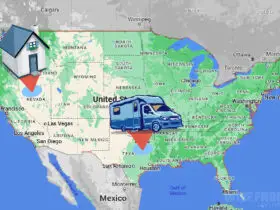
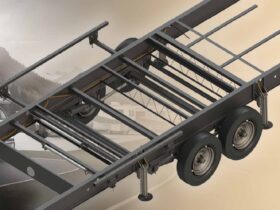
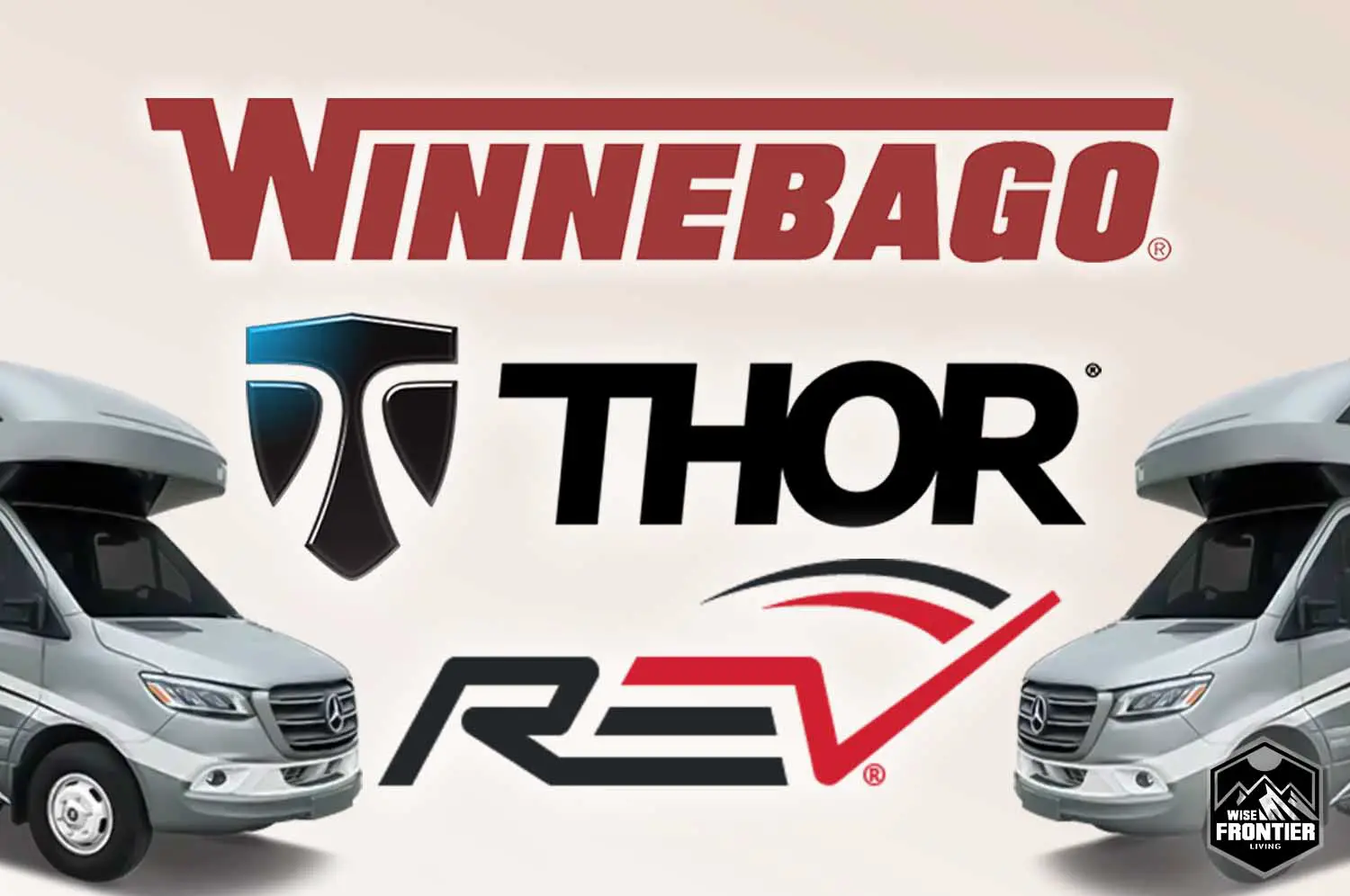
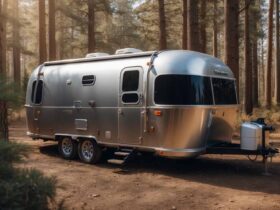

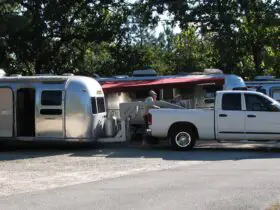
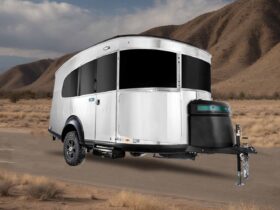

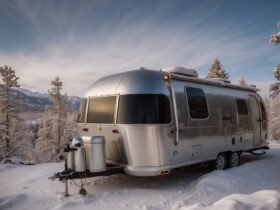
Leave a Reply